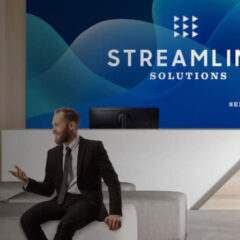Top Shelf: How Electronic Labels Help Improve Retail Profitability

Rising costs, a volatile economy and shifting consumer behaviors continue to put downward pressure on retail profit margins. To enhance profitability, more retailers are seeking ways to increase efficiency through automation and to improve the synchronization of their physical and digital sales channels. Electronic shelf label (ESL) systems address both of those strategies.
ESLs are digital displays attached to retail shelves in order to display product information, pricing and other relevant data. They are far more than just a fancy alternative to conventional paper labels, however. Because they are wirelessly linked to the data network, ESLs create the potential for a wide range of operational benefits through increased in-store digitalization.
Accelerating Change
Dynamic pricing is perhaps the most compelling of those benefits. ESLs are typically connected to a store’s point-of-sale and ERP systems, creating a networked system that enables retailers to update thousands of labels simultaneously to reflect real-time pricing and inventory data. Labels can even be updated multiple times per day if necessary.
That’s far more efficient — and accurate —than manually changing labels. That process typically requires someone to manually enter new pricing data into the system, print new tags and then have staff roam throughout the store removing and replacing old tags. Besides taking hours to complete, it’s highly prone to errors such as mislabeling items or missing necessary changes.
The connection to back-end management systems and applications also supports the transition to a hybrid retail model that seamlessly integrates traditional brick-and-mortar stores with online marketplaces. With just a few mouse clicks, stores can change prices, update product information, launch promotions or update inventory levels across both digital and physical operations. Surveys show that consumers expect that type of cross-channel pricing consistency.
A Good Investment
Of course, making the transition to an ESL system involves additional hardware, software, installation and maintenance costs when compared to paper-label systems. However, a December 2022 study conducted by Forrester Consulting suggests ESL is a solid investment. According to the total economic impact study, an ESL system effectively pays for itself within 18 months and produces a five-year ROI of 277 percent through the following cost savings and business benefits:
- Savings from automated price changes. Retailers estimated it takes 2 minutes for an employee to change one paper label manually. With an estimated 3,000 price changes happening in a single store in a single week, this works out to about 5,200 hours per year.
- More efficient order fulfillment. Flashing LED lights on the labels make it easier for staff to pick and pack online orders by guiding them to the correct items. According to Forrester, this reduces order fulfillment time by 50 percent.
- Faster shelf replenishment. Label lights also alert staff when stock on shelves needs to be replenished. The study found that this reduced the time staff spent navigating the store to find the right shelf locations by 35 percent.
- Less waste and fewer errors. Retailers reported that ESL helped reduce waste through rapid price changes on perishable items. Additionally, it reduced human pricing errors as well as the customer complaints they generated.
Electronic shelf labels provide proven benefits to retailers, but implementing the ESL infrastructure can be challenging. SageNet eases the process with our turnkey ESL solution that combines all necessary hardware, software and services, along with data integration, onsite installation, proactive monitoring, cloud-based management and around-the-clock help desk support. Contact us to learn more about improving profitability and the customer experience with a best-in-class ESL system.
More Insights
-
Digital Experiences, SageVIEW Approach
How Digital Signage Boosts Workforce Productivity
-
Digital Experiences
How Digital Signage Can Play a Role in Reducing Workplace Stress
-
Digital Experiences
7 Steps for Upgrading and Enhancing a Digital Signage Network
-
Digital Experiences
Why You Should Make Digital Signage Security a High Priority




